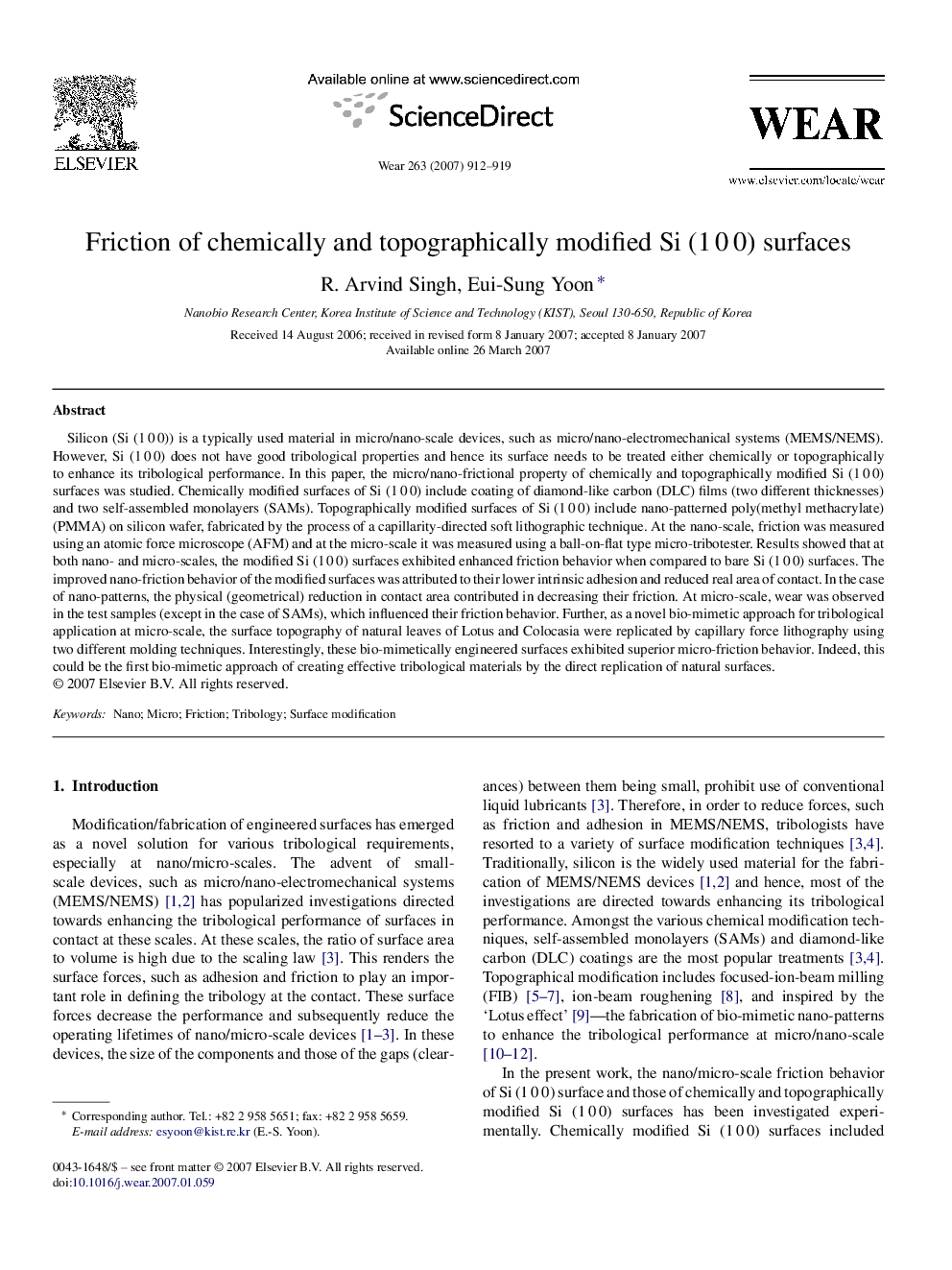| Article ID | Journal | Published Year | Pages | File Type |
|---|---|---|---|---|
| 619977 | Wear | 2007 | 8 Pages |
Silicon (Si (1 0 0)) is a typically used material in micro/nano-scale devices, such as micro/nano-electromechanical systems (MEMS/NEMS). However, Si (1 0 0) does not have good tribological properties and hence its surface needs to be treated either chemically or topographically to enhance its tribological performance. In this paper, the micro/nano-frictional property of chemically and topographically modified Si (1 0 0) surfaces was studied. Chemically modified surfaces of Si (1 0 0) include coating of diamond-like carbon (DLC) films (two different thicknesses) and two self-assembled monolayers (SAMs). Topographically modified surfaces of Si (1 0 0) include nano-patterned poly(methyl methacrylate) (PMMA) on silicon wafer, fabricated by the process of a capillarity-directed soft lithographic technique. At the nano-scale, friction was measured using an atomic force microscope (AFM) and at the micro-scale it was measured using a ball-on-flat type micro-tribotester. Results showed that at both nano- and micro-scales, the modified Si (1 0 0) surfaces exhibited enhanced friction behavior when compared to bare Si (1 0 0) surfaces. The improved nano-friction behavior of the modified surfaces was attributed to their lower intrinsic adhesion and reduced real area of contact. In the case of nano-patterns, the physical (geometrical) reduction in contact area contributed in decreasing their friction. At micro-scale, wear was observed in the test samples (except in the case of SAMs), which influenced their friction behavior. Further, as a novel bio-mimetic approach for tribological application at micro-scale, the surface topography of natural leaves of Lotus and Colocasia were replicated by capillary force lithography using two different molding techniques. Interestingly, these bio-mimetically engineered surfaces exhibited superior micro-friction behavior. Indeed, this could be the first bio-mimetic approach of creating effective tribological materials by the direct replication of natural surfaces.
